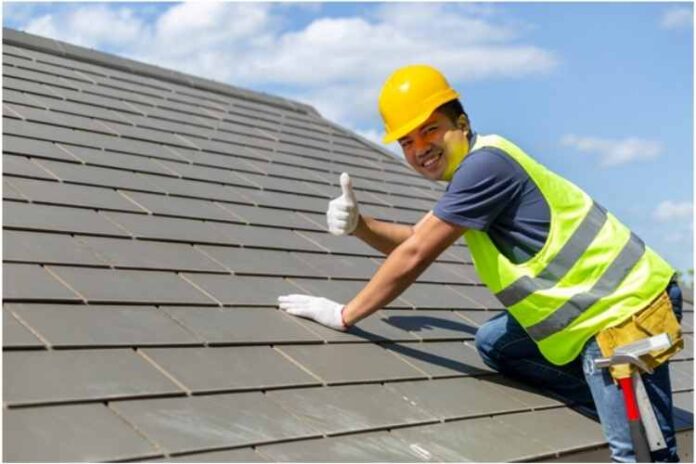Did you know that daytime temperatures in urban areas are between 1 and 7 degrees hotter than in places with abundant greenery? This principle works in the same way that tarmac is always much hotter than grass on a summer’s day.
How does this affect you? Increased temperatures mean you’ll need to spend a lot more money keeping your building cool in a city environment.
Cool roofs offer a solution to this problem.
‘What is a cool roof?’, you ask. Keep reading to find out more about these innovations.
What Is a Cool Roof Good For?
In built-up areas, tarmac and other dark-colored surfaces absorb heat from the sun more readily, creating a warmer environment around them.
A cool roof is a light-colored roof that reflects the sun’s rays instead of sucking heat into the depths of your building. So, you can cut down on how much you use your air conditioner to keep your interiors cool.
Research suggests you could save as much as 40% on electricity costs related to cooling when you install a cool roof.
Also, the less you use your air conditioner, the less electricity you use, which means fewer carbon emissions make their way into the Earth’s atmosphere.
Since the federal government has sworn to reduce carbon emissions nationwide as fast as possible, they’re willing to reward you for installing a cool roof on your building.
That means you’ll get some tax benefits on top of the savings you enjoy from using less electricity.
Types of Cool Roofs
There are two main types of cool roofs, i.e. residential and commercial. While they differ vastly, they all work to keep your building’s interiors more comfortable and reduce your energy bills.
Residential Cool Roofs
These types of roofs comprise materials that absorb less heat than they reflect. There aren’t many specialized cool roof options for home use.
So, unless you have a flat roof on your home, choosing a cool roof boils down to picking a more reflective material out of the available options. Simply choosing a lighter-colored tile may even help to cool your interiors slightly.
Reflective metal roofing uses cool pigmented paint to reflect the sun’s rays, lowering the surface temperature of your roof. This prevents the air in your attic from heating up and warming your entire home.
You can also opt for modern cool roof coating treatments that involve applying a formula to the upper layer of granules on your asphalt shingles, so they reflect more heat.
Another option is to get your roof painted with reflective, light-colored paint or replace your shingles or roof tiles with modern reflective ones. You can get these in a wide range of colors to suit your home, including rich, dark tones that still reflect the sun’s heat.
Commercial Cool Roofing Systems
Since most commercial roofs are low-slope roofs, it’s difficult to replace them with alternative roofing materials.
That’s why most commercial cool roofing systems comprise roof coatings. These thick paints contain reflective or white pigments that reflect heat and add an extra layer of protection to commercial roofs.
Spray-on polyurethane foam is another good option for cooling a low-slope roof. This foam comprises a mix of two liquid chemicals that combine to form a flexible single layer that sticks to the top of the roof.
Apart from coatings, some commercial roofing systems also offer cooling benefits. These are:
Single-Ply Membranes
Single-ply roofing membranes comprise sheets made of one of the following materials:
- Ethylene Propylene Diene M-class (EPDM)
- Polyvinyl Chloride (PVC)
- Thermoplastic Polyolefin (TPO)
TPO and PVC provide reflective surfaces since they’re already white, and you can add a coating to a black EPDM membrane or reformulate it to transform it into a cool roof.
Built-Up Roofing
These roofs have multiple layers comprising a base sheet, reinforcement layers of fabric, and an upper protective layer.
You can easily change BUR into a cool roof by adding marble chips, gravel, and mineral granules to the upper layer, or by adding a reflective coating to it.
Modified Bitumen Sheet Membranes
Modified bitumen sheets comprise layers of plastic or rubber finishes with mineral granules or a smooth finish. Cool coatings added during manufacturing help increase these roof’s cooling capabilities.
Are There Any Drawbacks to Cool Roofing?
The disadvantage to cool roofing is that it only works one way. It can’t keep your building warm during winter.
So, if you live in a consistently cool climate, one of these roofs could increase your energy bills by causing you to use more electricity for heating purposes.
Remember, if you live in a place with warm summers and snowy winters, you can still benefit from a cool roof, since your roof will have a covering of white snow in winter anyway.
Likewise, if the summer temperatures in your area aren’t extreme, installing a cool roof might not bring many benefits if it results in increased winter heating costs.
Exploring Your Options
Now that you have some answers to the question, ‘what is a cool roof?’, what can you do about it?
If your roof is nearing its expiry date, it makes sense to work with a reputable contractor to find a cooler solution for your home. You could save a ton of money on electricity over the 20-year lifespan of the average roof.
Is your roof still relatively new? An experienced roof can help you discover cooling roof treatment options to help you maximize your savings.
Are you keen to discover more ideas for making your home a better place? Browse our website for top tips on designing a cost-effective, modern home.


























